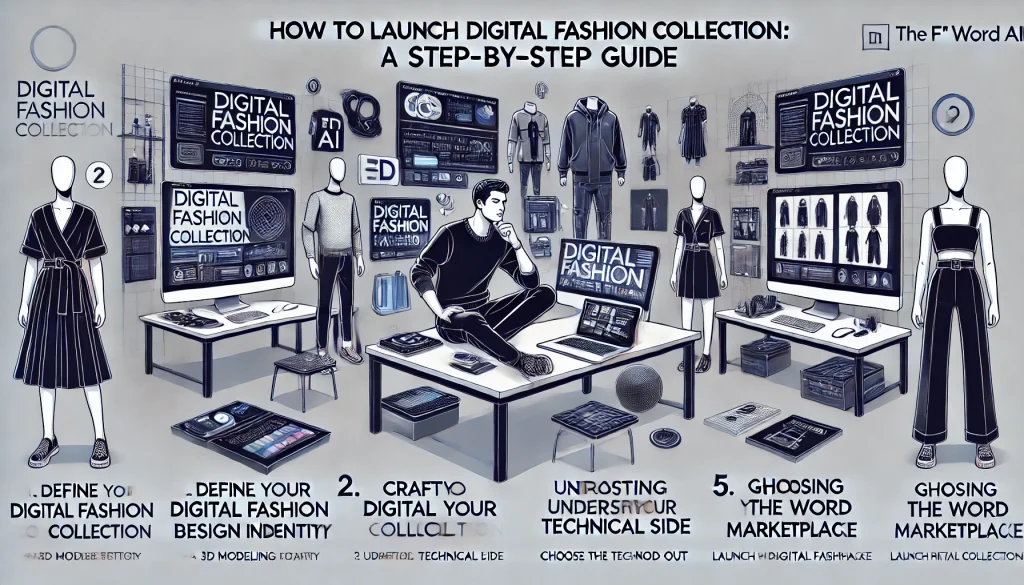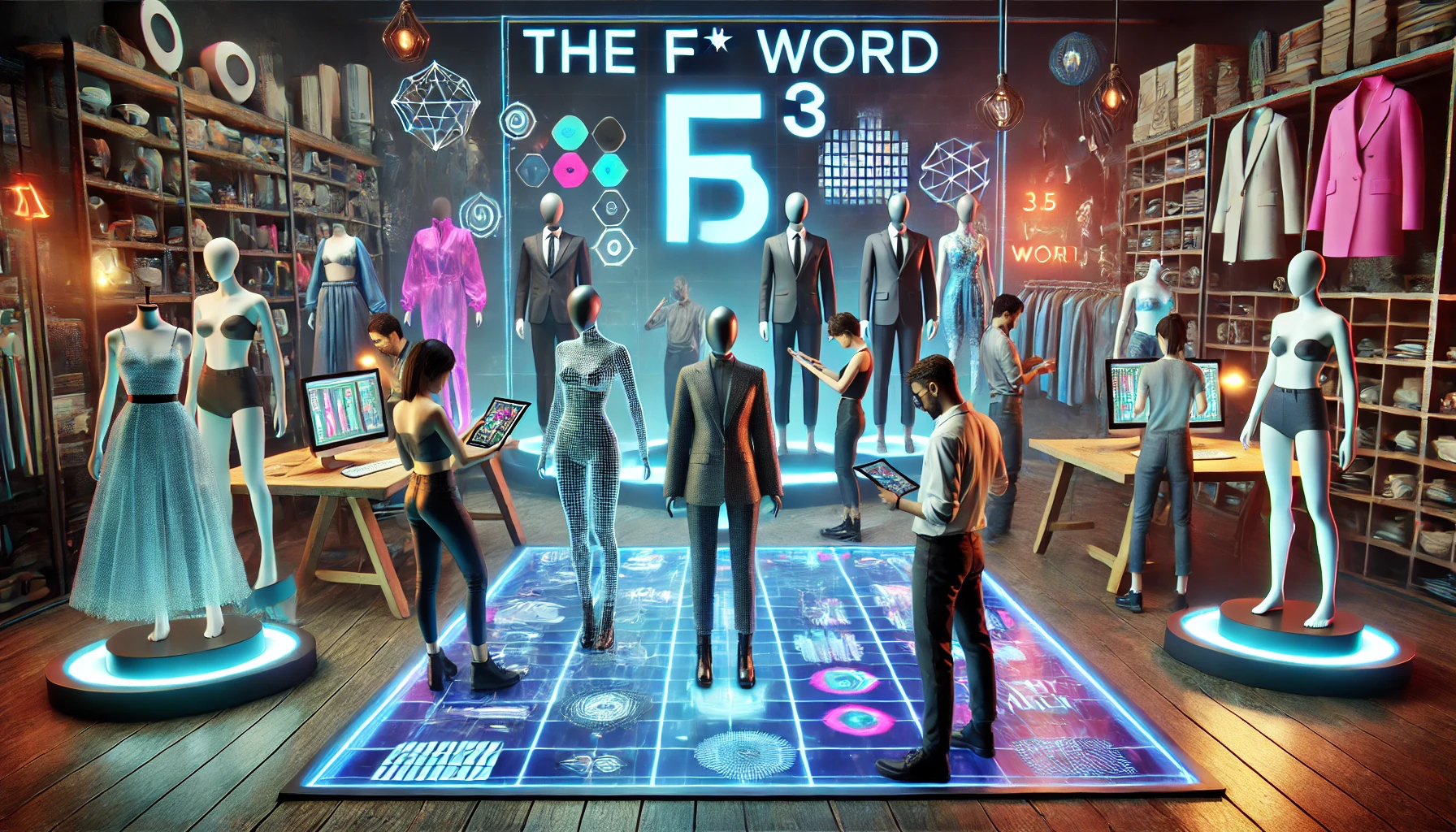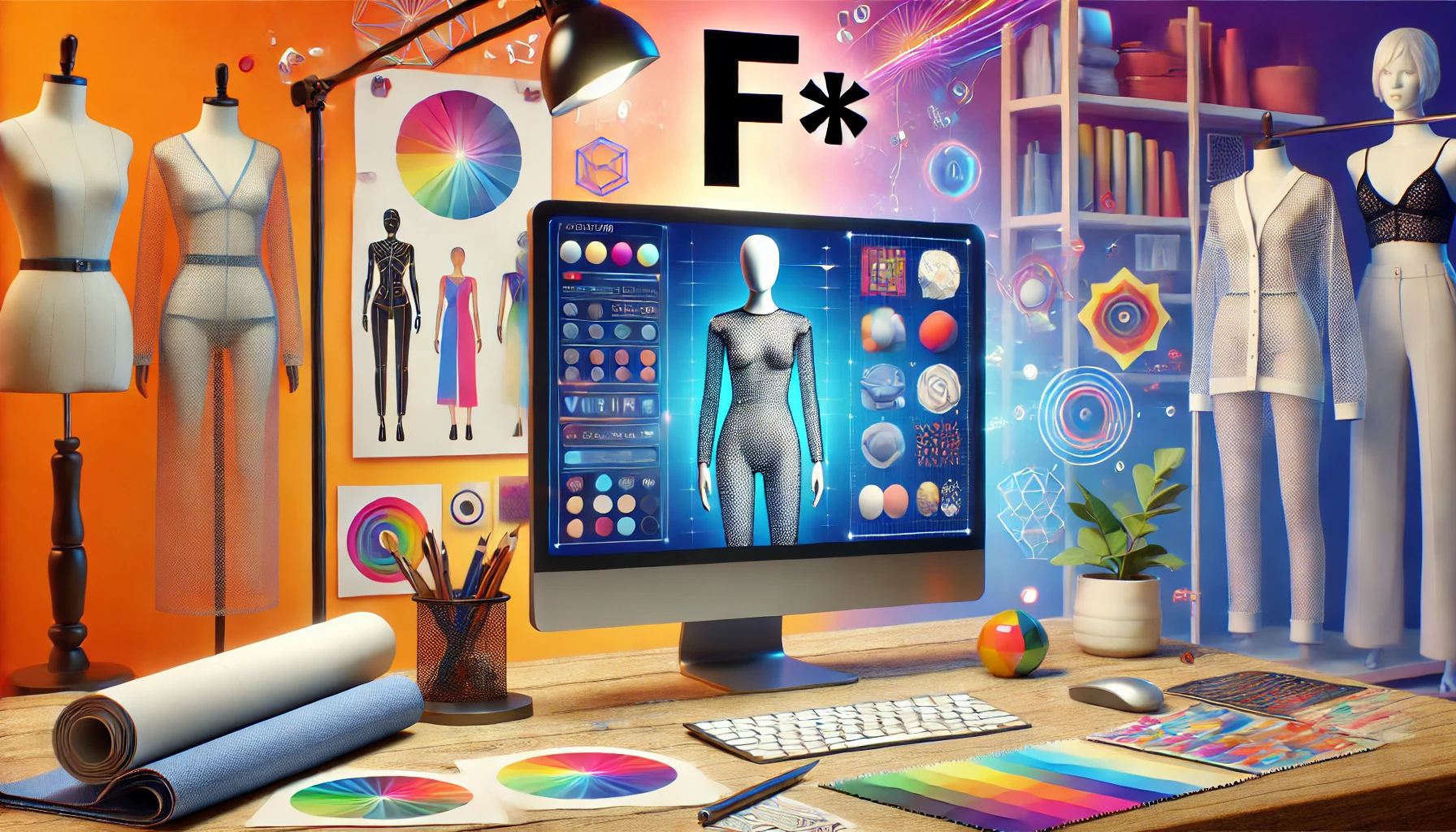Fashion is an exciting blend of art and commerce. To successfully launch a digital fashion collection, you need to think through both the creative and business aspects carefully. Just like picking fabrics for a physical collection, launching a digital fashion collection requires understanding your design direction, target market, and the technical aspects of digital fashion.
Launching a digital fashion collection brings unique considerations. While you won’t be touching fabric, factors like drape, texture, and movement need to be replicated digitally. Familiarize yourself with 3D modeling software commonly used in digital fashion design. These tools let you create realistic simulations of different fabric types, which is crucial for showcasing your digital garments convincingly.
Essential Steps to Launch a Digital Fashion Collection
When working with digital fabrics, think about their digital counterparts and the platforms where you will showcase them. A keen understanding of your target audience is essential. Who are you designing for?
This will greatly influence your design choices and where you choose to launch your digital fashion collection. It can also inform you on whether to offer digital wearables, explore virtual stores, or how to position a physical garment within your collection.
1. Define Your Digital Fashion Brand Identity
First things first, establish a solid brand identity. Your brand is the heart and soul of your collection and what sets you apart in a competitive landscape. This means carving out your niche. Will you focus on avant-garde couture, streetwear, or something in between?
Your brand identity should shine through in your designs, branding materials, and overall messaging. A strong visual identity is paramount, including your logo, color palette, typography, and overall aesthetic.
These elements should reflect your brand’s personality and resonate with your target audience. Your visual language should be consistent across all platforms, from your website to social media.
2. Crafting Your Digital Fashion Collection
Just as with physical fashion, start with a design direction and color story. What inspires you? What message do you want to convey through your digital garments? Mood boards, sketches, and digital collages can be just as valuable in the digital realm for conceptualizing your collection.
This process lays the foundation for a cohesive and impactful collection. Collaboration is key, so consider working with 3D artists and designers who specialize in digital fashion.
They can bring fresh perspectives and technical expertise. Explore platforms and software specifically designed for creating and showcasing digital fashion, which can help bring your digital designs to life with incredible detail and realism. This is where your digital fashion house can truly stand out.
Remember, unlike physical fashion, you’re not bound by the constraints of gravity, fabric limitations, or even traditional tailoring techniques. Don’t be afraid to experiment with unconventional shapes, textures, and embellishments to push the boundaries of fashion as we know it. Digital fashion thrives on innovation and allows you to explore new frontiers in the fashion industry.
3. Understanding the Technical Side
You need to understand how to present your digital clothing collection. Are you partnering with gaming platforms, creating augmented reality experiences, or showcasing your designs on virtual avatars? The sky’s the limit with digital fashion.
Fashion collections can be enhanced by incorporating cutting-edge technologies, as evidenced by examples such as Danit Peleg’s work with 3D printing. It’s essential to select the right platforms and technologies that align with your brand’s vision and your target audience’s preferences.
Once you’ve brought your digital garments to life, it’s time to consider how you will display them to the world. This involves understanding digital environments like metaverse platforms and the role of visual effects. Imagine your clothing shimmering under virtual lights or flowing in a digital breeze— these visual details can captivate your audience. Consider these aspects during the design phase, optimizing your digital creations for their intended environments.
4. Choosing Your Digital Fashion Marketplace
Today, a variety of platforms are dedicated to digital fashion. You need to research which ones are most aligned with your target audience. Some focus on virtual reality experiences, others are built into games, and some even allow for digital fashion ownership through NFTs.
Think about whether your brand would benefit from participating in events like Metaverse Fashion Week or traditional fashion weeks like Paris Fashion Week. Consider how media platforms fit into your strategy. Research, compare, and select the platform that best suits your brand and target audience.
5. Getting the Word Out: Launch Your Digital Fashion Collection
A successful launch involves leveraging multiple channels. Social media plays a vital role— consider creating a strong visual presence on platforms frequented by your target audience. Collaborations are also essential.
Partner with digital influencers and established names in the digital fashion space to increase visibility. You’ll need captivating visuals of your digital garments, engaging video content showcasing their movement and texture, and a strong social media strategy to create buzz and generate excitement.
Consider the power of virtual fashion shows or presentations. Embrace the potential for interactive and immersive storytelling. These strategies not only enhance your audience’s experience but also set the stage for your brand’s journey in the digital realm. Don’t underestimate the value of influencer marketing. Collaborate with those who have a strong following in the digital fashion world.
The fashion industry has evolved. Digital fashion is not just about aesthetics. Sustainability is a significant factor, as digital fashion can reduce waste associated with physical production.
Conclusion
Successfully launching a digital fashion collection hinges on understanding its unique dynamics. It calls for creative vision, technical expertise, and a keen understanding of your market. It requires careful planning, attention to detail, and a commitment to delivering value.
Embrace this evolving world, and you are poised for remarkable success. By combining your artistic vision with strategic planning, your digital fashion collection can make waves.




